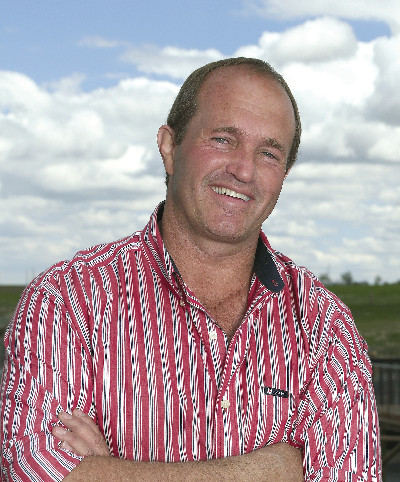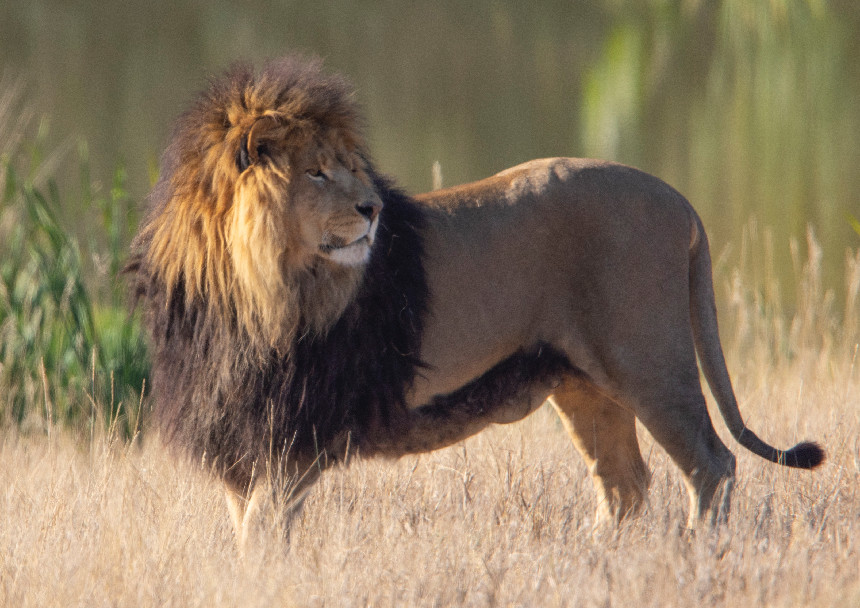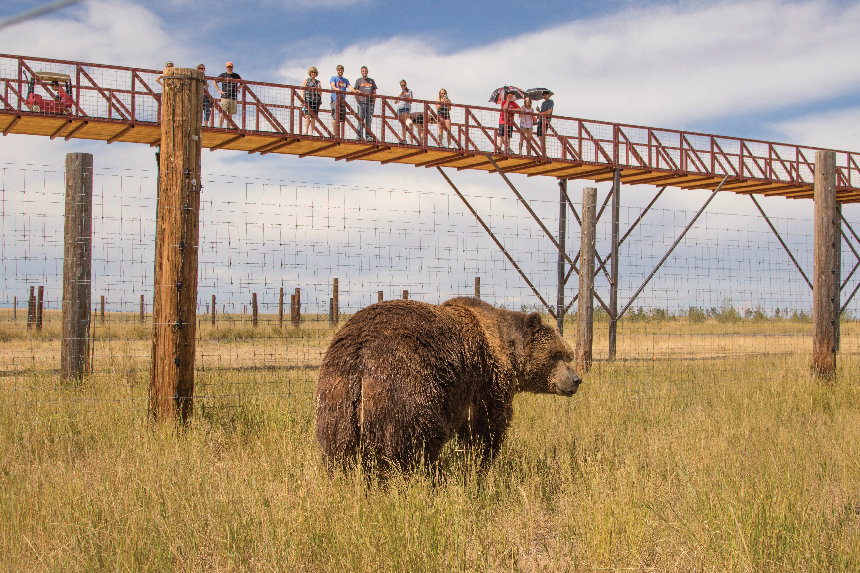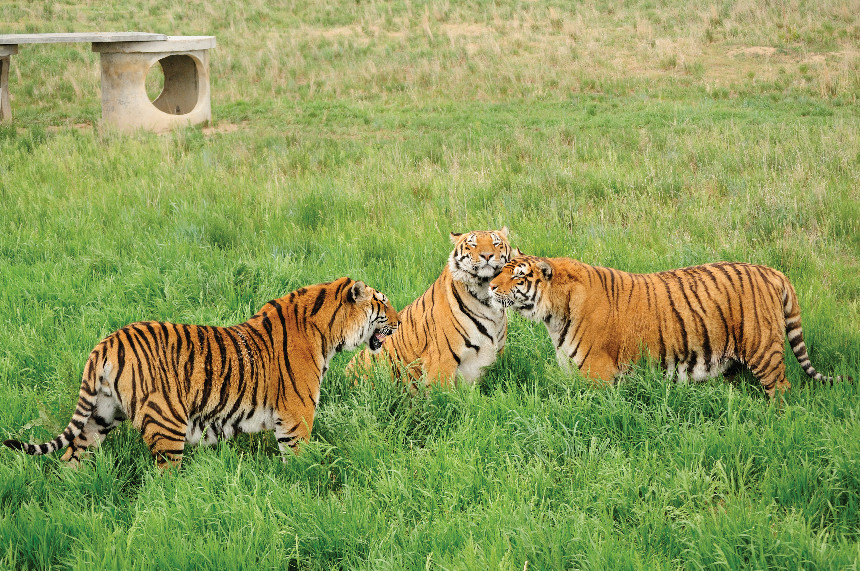When Pat Craig arrived at Joe Exotic’s animal park in Oklahoma, malnourished tigers with thin coats lay in small, cramped cages. Many had dental issues. Some struggled to walk. For Craig, founder of The Wild Animal Sanctuary — the world’s oldest and largest sanctuary dedicated to rescuing large carnivores — the sad scene was unsurprising. Over the past 40 years, Craig has rescued more than 1,000 animals from gruesome lives at roadside zoos and supposed sanctuaries. The difference this time was a film crew. Joe Exotic’s life was being filmed for Tiger King, a seven-episode Netflix series that debuted in 2020.
In 2017, Exotic agreed to relinquish some of his animals. Craig rescued 39 tigers and three bears, bringing the traumatized creatures to his 10,000-acre sanctuary in Colorado. Many of the tigers had been abused: Undercover videos showed workers hitting them in the head with rifle butts. “Joe had shot lots of tigers over the years in front of other tigers,” says Craig. “They would kill you if they could because they’d been treated so bad. It took months for them to realize that not everybody is going to beat them.” (Before Tiger King aired, Joe Exotic was sentenced to 22 years in federal prison on two murder-for-hire convictions and crimes against wildlife.)

The tigers now roam free on 40 acres of land. The bears reside on a 15-acre habitat where they hibernated for the first time in their lives. More than 500 four-legged residents — including not only lions and tigers but wolves, alpacas, and camels — live on the sanctuary’s two Colorado properties, and for many animal welfare organizations and government agencies, Craig is the go-to guy for saving some of the roughly 25,000 lions, tigers, and bears that live in captivity outside of the U.S. zoo system. He has worked with nonprofits such as People for the Ethical Treatment of Animals (PETA) as well as the U.S. Department of Agriculture, the U.S. Fish and Wildlife Service, state agencies, and governments in countries from Canada to Peru.
“There’s no one like Pat Craig,” says Brittany Peet, the PETA Foundation’s deputy general counsel for captive animal law enforcement. “Once we know that we’ve secured the release of an animal from a roadside zoo or a traveling show or a private owner, I call Pat. He and his team will drop everything to get on the road and rescue a bear or a tiger who needs help.”
Joe Exotic’s zoo is similar to many places where The Wild Animal Sanctuary conducts rescues. “About 85 percent of the animals are part of a confiscation or a legal battle, so we go on these no-knock raids where people are put in handcuffs, and they’re screaming and yelling and spitting on us and throwing things,” Craig says. “And there are crazy people with guns. We see that stuff every time we go on a rescue.”
Coping with irate animal owners is not the life he envisioned as a boy. Craig grew up on “a gentleman’s farm” in Colorado with horses, cows, and chickens. When he was 16, his father died. His dad owned gas stations and tire stores in Boulder, and by age 18, Craig was already running some of the businesses. He planned to earn a business degree in college, but on a fateful trip to Florida, he visited a friend who worked as a groundskeeper at a zoo.
“I just wanted to say hi, but he showed me around, and in the back, I saw lions and tigers in these cages that were so small you wouldn’t want to keep a dog in them,” he says.
The animals were surplus — the result of overbreeding — and would likely be euthanized. When a dismayed Craig returned to Colorado, he called the Denver Zoo about taking the animals, but Denver’s zookeepers also had a surplus. Then it occurred to him: Perhaps he could bring the animals to the family farm. He was only 19, but he studied local regulations and zoning laws, formed a nonprofit, and built a small compound. He next wrote zoos nationwide offering to help if they planned to euthanize animals. In the first month alone, he received over 300 responses.
“I was like, wow, this is gigantic,” he says. “It was obvious how bad the problem was.”
He started with a dozen big carnivores. Soon he dropped out of college to focus on making money and saving more animals. “Back then I needed to work to bring in the money to pay for food and all the other stuff,” he says. “I was doing this for a number of years before people started saying, ‘Hey, I’ll come out and help clean’ or ‘I’ll donate 20 bucks or buy some food.’”

After about five years, he bought a second, larger property before moving to the sanctuary’s current sprawling location northeast of Denver. The goal, he says, is to provide the animals with plentiful space and to treat them with dignity and respect.
“We have prides of lions that live together, just like they would in the wild,” he says. “They’re roaming free and playing and doing what they want. We just give them medical care and food.”
The animals eat 40,000 pounds of meat each week, and the COVID-19 pandemic has hurt fundraising and food donations. The need, however, remains strong. Buying and selling protected wildlife is the world’s third largest source of criminal earnings, behind arms smuggling and drug trafficking, according to PETA. The problems stem largely from overbreeding. In the 1950s and ’60s, zoos discovered that nurseries with cute baby animals were enormously popular with visitors. “That became the number one draw for every zoo in the country,” says Craig. “So most zoos succumbed to the pressure of breeding more than they needed.”
“We go on these no-knock raids where people are put in handcuffs, and they’re screaming and yelling and spitting on us and throwing things. And there are crazy people with guns.”
As the babies grew, some were sold to other zoos, but the market became saturated. “By the time I got involved, they were starting to euthanize them like crazy, and yet they were still breeding them,” says Craig. Private contractors who hauled the animals from zoo to zoo began selling them to private parties — and the breeding continued.
State and federal laws have helped somewhat to reduce breeding and the illegal trade of animals, but what’s most useful, Craig believes, is the increasing condemnation of people who own large carnivores (such as an 85-year-old woman Craig encountered whose tiger would routinely escape and wander into the Oregon redwoods to the surprise of unsuspecting hikers). To help increase public awareness, Craig opened the sanctuary to visitors in 2002. Given his goal of treating the animals with respect — the sanctuary prohibits breeding and hands-on human contact — visitors observe the animals from a 30-foot-high, 1.5-mile-long elevated walkway.
“When strangers come in at ground level, the animals get scared and nervous because they don’t know these people — they’re threats to their territory,” he says. “But they don’t think the sky is their territory, so they don’t care about people on the walkway.”

Although he was originally reluctant to open the sanctuary to visitors, Craig now sees it as an opportunity to educate more people. “We wanted the public to know, if they hear about some guy driving around in his Ferrari with a tiger or a lion, they should say, ‘What are you doing? That animal is going to end up dead or in some cruddy roadside zoo.’” The sanctuary receives 150,000 guests a year.
Seeing wounded, ill-treated animals remains the hardest part of the job. Recently the sanctuary rescued Dillan, an Asiatic black bear, from a sportsmen’s club in Pennsylvania. Dillan’s concrete cage was next to a shooting range, and he suffered from extreme zoochosis, a stress condition often endured by animals in captivity. Dillan would rock incessantly against the concrete walls. He was also morbidly obese and suffered from rotting teeth. In South Carolina, Craig rescued black bears that were used to train hunting dogs. The bears’ owner had removed their teeth and claws and tied the animals to a fence. The dogs would attack the bears to build their confidence around large carnivores.
The cruelty can be gut-wrenching. But the animals’ recoveries bring him peace.
“If all we ever saw was the abuse, I don’t think I could do it,” he says. “You’d go insane. But once we get them back here and give them care, we know they’ll have a good life. We watch them go through this metamorphosis from being severely malnourished or having medical problems or living in a 15-by-15-foot cage to running on grass for the first time in their lives. It feels good to give them a life that they never knew existed.”
Ken Budd is the author of The Voluntourist. His work appears in the 2020 edition of The Best American Travel Writing.
This article is featured in the January/February 2021 issue of The Saturday Evening Post. Subscribe to the magazine for more art, inspiring stories, fiction, humor, and features from our archives.
Featured image: Creatures of all stripes: The Wild Animal Sanctuary rescues not only large cats, but camels, horses, ostriches — even porcupines. (Courtesy Wild Animal Sanctuary)
Become a Saturday Evening Post member and enjoy unlimited access. Subscribe now




Comments
I hope these stories makes people realize they have no business owning wild animals.
I had previously experienced some familiarity with the Carole Baskin facility in Florida. I was dismayed by the mixed level of dedication to the individual carnivores, and the unique problems they demonstrated as individuals. The “Big Cat Rescue”, as the facility was named at the time was divergently focused on an on-going conflict for political advantage and the level of care of the carnivores. ie. too many agendas distilling the highest, best care for the “big cats”.
Mr. Craig’s Wild Animal Sanctuary seems to possess the key parameters of (1)dedication to the wild animals, (2)adequate physical facility, (3)dedication, focus on the founding purpose as defined, manifested by Mr. Craig.
I’ve been following this sanctuary for a while, and I can say it offers the best solution for captive animals. Try as they might, you see in other accredited sanctuaries, cats constantly coming up to the wire, and you know they are aware of their captivity. Carole Baskin bragged for years she had the largest sanctuary in the world at 60 acres, demanding money for this even though she has quietly downsized to 50 cats. I hope when America’s stain of breeding Exotics and mistreating them is banned altogether, eventually, it will only have large free-roaming sanctuaries like this.
Pat Craig and his staff and volunteers are amazing humans! This place gets some of my money consistently to help these poor animals that don’t understand why they were mistreated so badly. It is gut wrenching to read about and see what they have endured. We visit them at least once a year, sometimes more, and it’s comforting to see how far some of them have come from where they started. Any amount of money they receive is helpful…no amount is too small. Please support this truly worthy cause and let others know about it!
I visit and support The Wild Animal Sanctuary often. It’s the best place large, rescued wildlife can end up. I’ve heard countless people switch from complaining that they’re just another zoo that charges an admission and wants your money to hearing them proclaim after a visit that they understand now how much their work is needed, why they charge an admission fee and that they will support their work.
It’s amazing to watch the transformation of the animals that come into their care and seeing how much joy they get from life now. The Wild Animal Sanctuary’s work is vital to the wellbeing of rescued animals that have been abused and taken advantage of by people.